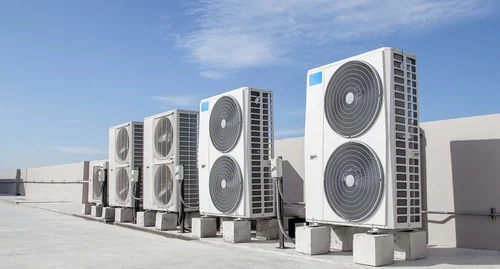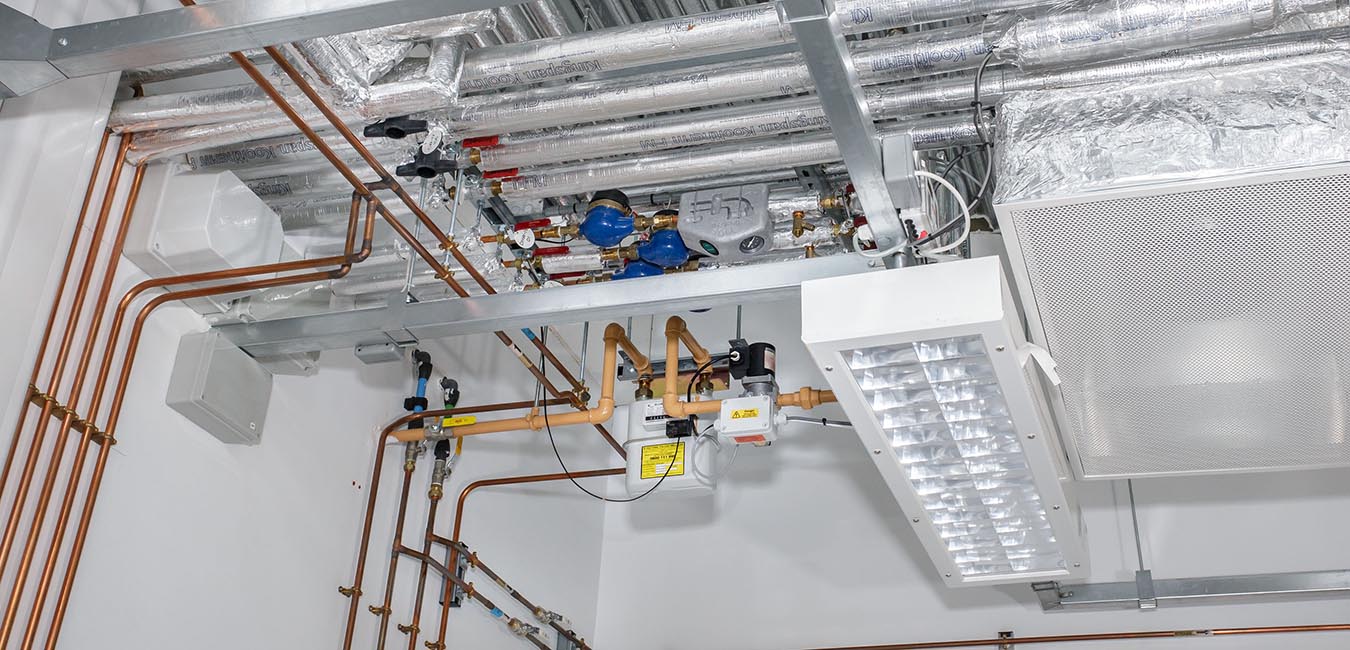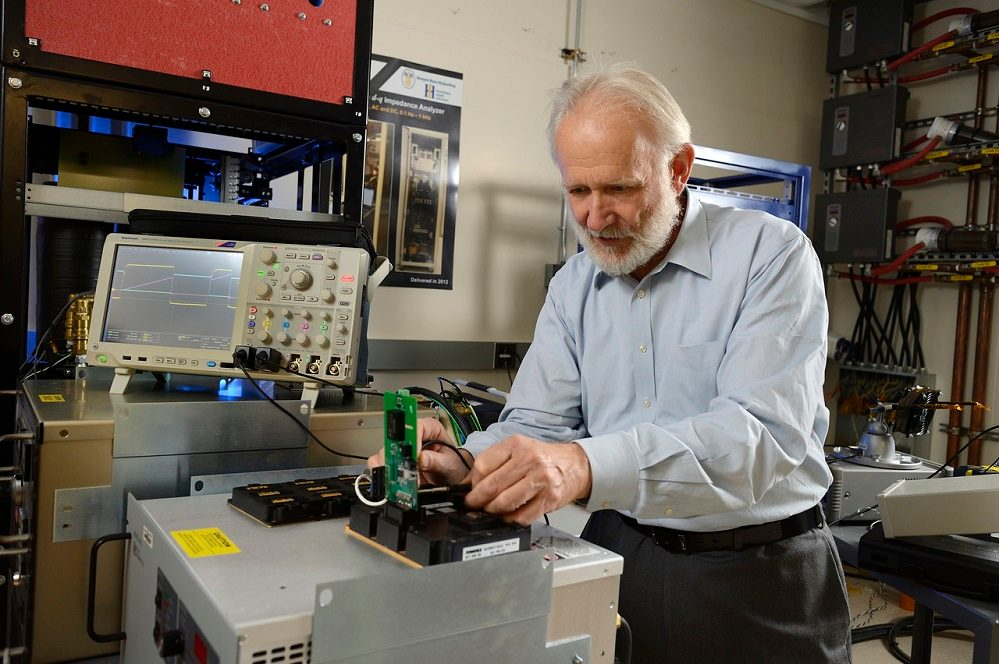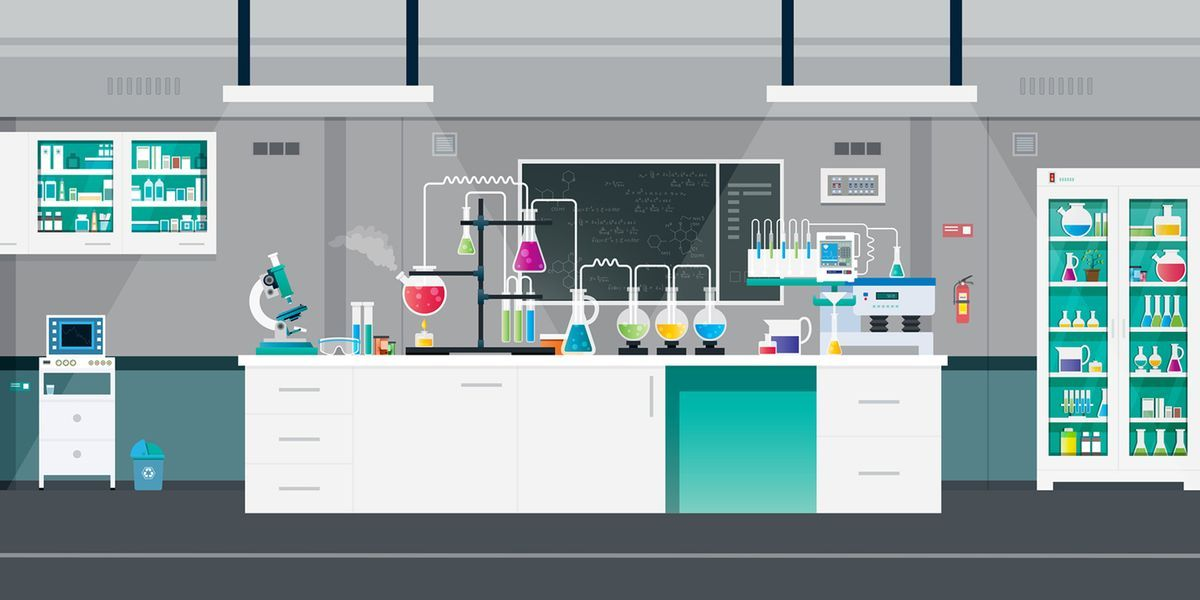Comparing HVAC system architectures


In the realm of scientific research, laboratories serve as the bedrock of innovation, where groundbreaking discoveries are made and technological advancements are driven. These specialized environments demand meticulous control over a multitude of factors, including temperature, humidity, air purity, and pressure, to ensure the integrity and reproducibility of experiments. Among these critical parameters, the role of HVAC systems stands out as paramount, shaping the very foundation upon which scientific endeavors are built.
HVAC systems, encompassing heating, ventilation, and air conditioning, are not mere utilities but rather sophisticated engineering marvels that play a pivotal role in maintaining the delicate balance required for optimal laboratory operations. Their influence extends far beyond mere comfort, impacting the accuracy of experiments, the safety of personnel, and the longevity of sensitive equipment. The intricate interplay between temperature, humidity, and air quality directly affects the stability of reagents, the growth of cell cultures, the performance of analytical instruments, and the overall reliability of research findings.
The importance of HVAC systems in laboratories cannot be overstated. They serve as the guardians of a controlled environment, safeguarding the integrity of research and ensuring the safety of those who work within these specialized spaces. The design, implementation, and maintenance of these systems are critical considerations for laboratory managers, project leaders, and procurement professionals, as they directly impact the success and efficiency of research endeavors.
The evolution of laboratory research has witnessed a parallel evolution in the sophistication of HVAC systems. From basic temperature control to advanced air filtration and pressure management, these systems have become increasingly complex, reflecting the growing demands of modern scientific investigations. This complexity, however, presents a unique challenge: understanding the various architectures and configurations available and selecting the most appropriate system for a given laboratory setting.
The choice of HVAC system architecture is not a trivial matter. It involves a careful assessment of the specific requirements of the laboratory, including the types of experiments conducted, the sensitivity of materials used, and the potential hazards associated with the research. A poorly designed or inadequately maintained HVAC system can lead to a cascade of problems, ranging from compromised experimental results to safety hazards for personnel.
This article delves into the intricacies of HVAC system architectures, providing a comprehensive overview of the different configurations available and their suitability for various laboratory settings. By exploring the advantages and disadvantages of each architecture, we aim to empower laboratory professionals with the knowledge necessary to make informed decisions regarding the design, implementation, and maintenance of their HVAC systems. This knowledge will ultimately contribute to the success of their research endeavors, ensuring the integrity of their findings and the safety of their personnel.
The following sections will delve into the specific architectures commonly employed in laboratory settings, examining their key features, operational principles, and suitability for different research applications. We will also explore the factors that influence the selection of a particular architecture, including the size and layout of the laboratory, the types of experiments conducted, and the budget constraints. By providing a comprehensive understanding of HVAC system architectures, this article aims to equip laboratory professionals with the tools necessary to optimize their research environments and achieve their scientific goals.
The Crucial Role of HVAC Systems in Laboratory Environments
The scientific community relies heavily on controlled environments to ensure the accuracy and reproducibility of research. Laboratories, in particular, require precise temperature, humidity, and air quality control to safeguard sensitive experiments, delicate equipment, and the health of researchers. This is where HVAC systems, or Heating, Ventilation, and Air Conditioning systems, play a pivotal role. HVAC systems are the backbone of a well-functioning laboratory, providing the necessary environmental control to support a wide range of scientific endeavors.
The importance of HVAC systems in laboratories cannot be overstated. They are responsible for maintaining optimal conditions for a variety of critical processes, including:
- Temperature Control: Maintaining a stable temperature is crucial for many scientific experiments, especially those involving biological samples, chemical reactions, and sensitive equipment. Fluctuations in temperature can lead to inaccurate results, equipment malfunction, and even safety hazards.
- Humidity Control: Humidity levels can significantly impact the stability of certain materials, such as biological samples, chemicals, and electronic equipment. Excessive humidity can lead to mold growth, corrosion, and equipment failure, while low humidity can cause static electricity and damage sensitive instruments.
- Air Quality Control: Maintaining clean air is essential for protecting researchers from airborne contaminants and ensuring the integrity of experiments. HVAC systems filter out dust, pollutants, and other airborne particles, creating a safe and controlled environment for research.
- Pressure Control: In some laboratories, maintaining a specific air pressure is crucial to prevent the contamination of sensitive experiments or to ensure the safe handling of hazardous materials. HVAC systems can be designed to create positive or negative pressure environments, depending on the specific requirements of the laboratory.
The design and implementation of HVAC systems in laboratories require careful consideration of various factors, including the specific needs of the research being conducted, the size and layout of the laboratory, and the budget available. Different types of HVAC systems are available, each with its own advantages and disadvantages. Understanding the different architectures and their suitability for specific laboratory applications is crucial for optimizing the performance and efficiency of the HVAC system.
HVAC System Architectures: A Comparative Overview
The choice of HVAC system architecture for a laboratory depends on a multitude of factors, including the size and layout of the laboratory, the specific research being conducted, the budget available, and the desired level of environmental control. Different HVAC system architectures offer varying levels of flexibility, efficiency, and cost-effectiveness, making it essential to carefully evaluate the pros and cons of each option before making a decision.
The most common HVAC system architectures used in laboratories include:
- Centralized HVAC Systems: Centralized HVAC systems are typically used in larger laboratories or facilities where multiple rooms require similar environmental conditions. These systems consist of a central unit that handles heating, cooling, and ventilation for the entire building. The conditioned air is then distributed to individual rooms through a network of ducts and diffusers. Centralized systems offer advantages such as centralized control, energy efficiency, and ease of maintenance. However, they can be more expensive to install and may require more space for the central unit and ductwork.
- Decentralized HVAC Systems: Decentralized HVAC systems, also known as split systems, are commonly used in smaller laboratories or individual rooms with specific environmental requirements. These systems consist of individual units that handle heating, cooling, and ventilation for a single room or a small group of rooms. Decentralized systems offer flexibility in terms of temperature and humidity control, as each unit can be independently adjusted. They are also generally less expensive to install than centralized systems, as they require less ductwork and infrastructure. However, decentralized systems can be less energy-efficient than centralized systems and may require more maintenance due to the presence of multiple units.
- Variable Air Volume (VAV) Systems: VAV systems are a type of centralized HVAC system that uses variable-speed fans to adjust the airflow to individual rooms based on their specific needs. This allows for greater flexibility in temperature and humidity control, as well as improved energy efficiency. VAV systems are particularly well-suited for laboratories with varying research activities and environmental requirements. However, they can be more complex to design and install than traditional centralized systems, and they may require more sophisticated controls.
- Fan Coil Units (FCUs): FCUs are a type of decentralized HVAC system that uses a fan to circulate air over a heating or cooling coil. FCUs are typically used in individual rooms or small spaces and offer flexibility in temperature control. They are relatively inexpensive to install and maintain, but they can be less energy-efficient than other HVAC system architectures. FCUs are often used in laboratories where the environmental requirements are not as stringent as in other research settings.
- Air Handling Units (AHUs): AHUs are large, centralized HVAC systems that handle the heating, cooling, ventilation, and filtration of air for an entire building or a large portion of a facility. AHUs are typically used in large laboratories or research facilities with complex environmental requirements. They offer high levels of control and flexibility, but they can be expensive to install and maintain. AHUs are often used in conjunction with other HVAC system architectures, such as VAV systems, to provide a comprehensive and efficient solution for laboratory environmental control.
Factors to Consider When Choosing an HVAC System Architecture
The choice of HVAC system architecture for a laboratory is a critical decision that should be made after careful consideration of various factors. These factors include:
- Laboratory Size and Layout: The size and layout of the laboratory will influence the type of HVAC system that is most appropriate. Large laboratories with multiple rooms may require a centralized system, while smaller laboratories or individual rooms may be better suited for a decentralized system.
- Research Activities: The specific research being conducted in the laboratory will determine the environmental requirements. For example, laboratories conducting sensitive biological experiments may require a higher level of temperature and humidity control than laboratories conducting chemical research.
- Budget: The budget available for the HVAC system will influence the choice of architecture. Centralized systems are typically more expensive to install than decentralized systems, but they may offer long-term cost savings in terms of energy efficiency and maintenance.
- Energy Efficiency: Energy efficiency is an important consideration for any HVAC system, especially in laboratories where energy consumption can be significant. VAV systems and other advanced HVAC architectures can offer significant energy savings compared to traditional systems.
- Maintenance Requirements: The maintenance requirements of the HVAC system should be considered, as they can impact the overall cost of ownership. Centralized systems may require more specialized maintenance personnel, while decentralized systems may require more frequent maintenance due to the presence of multiple units.
- Flexibility and Control: The level of flexibility and control required for the HVAC system should be considered. VAV systems and other advanced architectures offer greater flexibility in temperature and humidity control, while traditional systems may be more limited in their capabilities.
HVAC System Design Considerations for Laboratories
Once the HVAC system architecture has been chosen, the next step is to design the system to meet the specific requirements of the laboratory. This involves considering a number of factors, including:
- Airflow Patterns: The airflow patterns within the laboratory should be carefully designed to ensure that the conditioned air is evenly distributed and that contaminants are effectively removed. This may involve using diffusers, grilles, and other air distribution devices.
- Filtration Systems: The filtration system should be designed to remove dust, pollutants, and other airborne particles that could contaminate experiments or harm researchers. The type of filtration system required will depend on the specific research being conducted and the level of air quality required.
- Temperature and Humidity Control: The HVAC system should be designed to maintain the desired temperature and humidity levels within the laboratory. This may involve using thermostats, humidifiers, and dehumidifiers.
- Pressure Control: In some laboratories, maintaining a specific air pressure is crucial to prevent contamination or ensure the safe handling of hazardous materials. The HVAC system should be designed to create positive or negative pressure environments, as required.
- Safety Features: The HVAC system should include safety features to protect researchers and equipment from hazards. This may include emergency shut-off switches, fire alarms, and other safety devices.
- Monitoring and Control Systems: The HVAC system should be equipped with monitoring and control systems to allow for real-time monitoring of environmental conditions and adjustments to the system as needed. This may involve using sensors, data loggers, and other monitoring devices.
HVAC System Maintenance and Operation
Once the HVAC system has been installed, it is essential to maintain and operate it properly to ensure its continued performance and efficiency. This involves a number of tasks, including:
- Regular Maintenance: Regular maintenance is crucial for keeping the HVAC system running smoothly and preventing breakdowns. This includes tasks such as changing air filters, cleaning coils, and inspecting the system for leaks or other problems.
- Calibration and Adjustment: The HVAC system should be calibrated and adjusted regularly to ensure that it is operating at optimal performance levels. This may involve adjusting thermostats, humidifiers, and other control devices.
- Monitoring and Troubleshooting: The HVAC system should be monitored regularly for any signs of problems. This may involve using sensors, data loggers, and other monitoring devices. If any problems are detected, they should be addressed promptly to prevent further damage or downtime.
- Energy Efficiency Measures: Energy efficiency measures should be implemented to reduce the energy consumption of the HVAC system. This may involve using energy-efficient equipment, optimizing airflow patterns, and implementing demand-response programs.
Conclusion
HVAC systems are essential for maintaining controlled environments in laboratories, ensuring the accuracy and reproducibility of research. The choice of HVAC system architecture and design should be carefully considered, taking into account the specific needs of the laboratory, the budget available, and the desired level of environmental control. Regular maintenance and operation are crucial for ensuring the continued performance and efficiency of the HVAC system.
By understanding the different HVAC system architectures and their suitability for specific laboratory applications, researchers and laboratory managers can make informed decisions that optimize the performance and efficiency of their HVAC systems, ultimately contributing to the success of their research endeavors.
Choosing the Best HVAC System for Your Lab
The selection of an HVAC system for a laboratory is a critical decision that directly impacts the quality of research, the safety of personnel, and the overall efficiency of operations. This decision requires a comprehensive understanding of the specific needs of the laboratory, including the types of experiments conducted, the sensitivity of samples, and the required environmental conditions.
The choice between a centralized and decentralized HVAC system hinges on a careful evaluation of factors such as the size and layout of the laboratory, the complexity of the research conducted, and the budget allocated for the system. Centralized systems offer advantages in terms of energy efficiency and centralized control, while decentralized systems provide greater flexibility and localized control over environmental conditions.
The selection of the appropriate HVAC system architecture is a crucial step in ensuring the success of any laboratory project. By carefully considering the factors outlined above, laboratory managers can make informed decisions that optimize the performance and efficiency of their facilities.
IT Tech understands the complexities of laboratory environments and the critical role that HVAC systems play in maintaining optimal conditions for research. We offer a comprehensive range of HVAC solutions tailored to meet the specific needs of laboratories, from design and installation to maintenance and support.
Our team of experts works closely with our clients to understand their unique requirements and recommend the most suitable HVAC system architecture. We leverage our extensive experience and industry knowledge to deliver customized solutions that ensure optimal performance, energy efficiency, and compliance with industry standards.
Whether you are planning a new laboratory construction project or upgrading your existing HVAC system, IT Tech is your trusted partner. Contact us today to discuss your specific needs and explore our range of HVAC solutions.
Submit an Enquiry today to learn more about how IT Tech can help you choose the best HVAC system for your laboratory.
Subscribe to our newsletter
Stay updated with IT-Tech Insights
Related posts
Check out other IT- Tech Scientific Resources

Proper installation of lab plumbing systems
Properly installed lab plumbing systems are crucial for maintaining a safe and efficient laboratory environment. This training module covers essential aspects of lab plumbing installation, including selecting the right materials, understanding code requirements, and ensuring proper connections and drainage. We'll also discuss best practices for minimizing contamination risks and maximizing system longevity. This comprehensive guide is designed to equip Public Health Engineering professionals with the knowledge and skills needed to install and maintain reliable lab plumbing systems.

Resolving wiring and grounding issues
Electrical issues can disrupt your lab's workflow and compromise safety. This article focuses on troubleshooting wiring and grounding problems, common culprits behind electrical malfunctions. We'll cover identifying signs of faulty wiring, diagnosing grounding issues, and implementing safe and effective solutions. Whether you're dealing with intermittent power outages, electrical shocks, or equipment malfunctions, this guide will equip you with the knowledge to resolve these problems efficiently and ensure a safe and reliable lab environment.

Resolving lab furniture and casework issues
Laboratory furniture and casework play a crucial role in the functionality and safety of any research facility. Over time, these elements can experience wear and tear, leading to various issues. This article offers a comprehensive guide to troubleshooting common problems, covering everything from drawer malfunctions to unstable work surfaces. By understanding the root causes and implementing effective solutions, you can ensure your lab furniture remains in optimal condition, promoting a productive and secure research environment. From identifying potential hazards to optimizing storage solutions, this guide empowers you to address issues proactively and maintain a high standard of laboratory operations.

























































.png)








